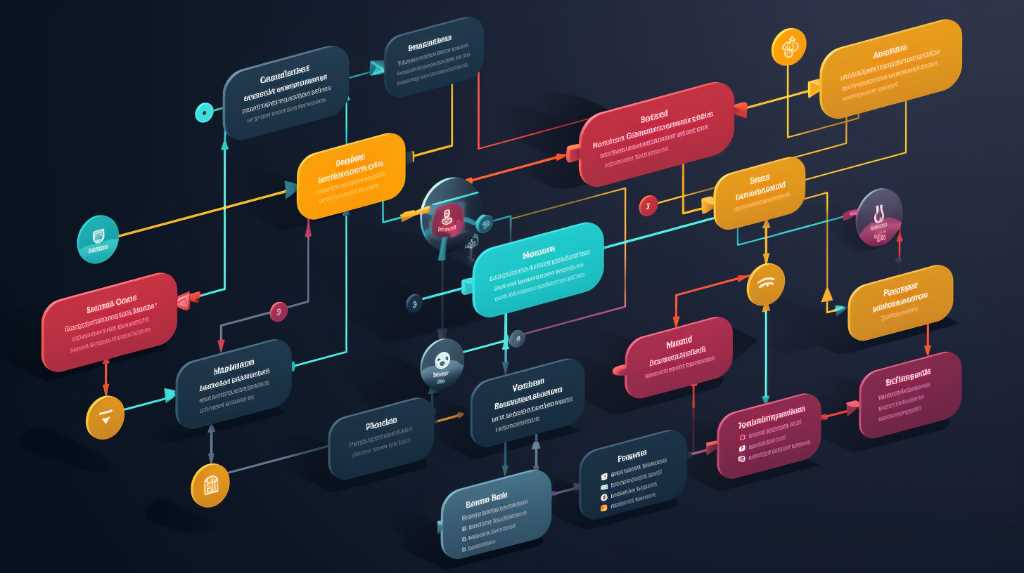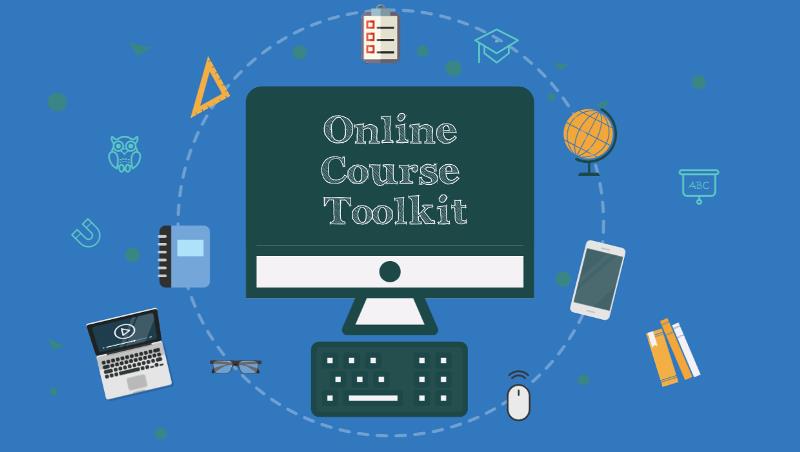
In today's digital age, the demand for online courses continues to grow exponentially.
To create a successful and impactful online course curriculum, it is crucial to follow a systematic and strategic approach.
This article will guide you through the top 10 essential steps, providing you with the knowledge and tools to develop an unbeatable online course curriculum.
From determining the target audience to evaluating and revising the curriculum, each step will be explored in detail, ensuring your course is engaging, effective, and tailored to meet the needs of your learners.
Determine the Target Audience
In order to create an effective online course curriculum, it is crucial to determine the target audience's specific needs and preferences. This starts with defining the target audience, which involves analyzing demographics and understanding their characteristics.
By doing so, course developers can tailor the curriculum to meet the unique requirements of the learners. Analyzing demographics helps identify factors such as age, education level, and professional background, which will influence the content and delivery methods used in the course.

For example, if the target audience consists of working professionals, it may be necessary to provide flexible scheduling options and practical, real-world examples in the curriculum.
Identify the Learning Objectives
To ensure a well-designed online course curriculum, it is essential to identify the learning objectives and align them with the desired outcomes of the target audience, thereby facilitating a focused and effective learning experience.
Learning outcomes serve as the foundation for instructional design, guiding the development of course content, activities, and assessments. By clearly defining the desired learning outcomes, instructors can create a roadmap for their course, ensuring that every element is purposeful and relevant.
Instructional design principles can then be applied to design and deliver the course in a way that engages learners and promotes effective learning. By aligning learning objectives with the desired outcomes, instructors can create a cohesive and meaningful learning experience that meets the needs and expectations of the target audience.
Conduct a Needs Assessment
We can conduct a needs assessment to gather data and identify the specific learning needs and requirements of our target audience. This step is crucial in developing an unbeatable online course curriculum that caters to the unique needs of our learners.
To conduct a successful needs assessment, consider the following steps:
Target audience analysis: Understanding the demographics, background, and motivations of our learners is essential. This analysis helps us tailor the curriculum to their specific needs and interests.

Learning needs assessment: By conducting surveys, interviews, or focus groups, we can gather valuable insights into what our learners want to achieve through the course. This helps us identify any knowledge gaps or skills that need to be addressed.
Data analysis: Once we have collected the necessary data, it is important to analyze it thoroughly. By examining the findings, we can identify common themes and trends, which will guide us in creating a curriculum that meets the needs of our target audience.
Design the Course Structure
Taking into account the needs and preferences of our learners, it is essential to carefully design and structure the course to ensure maximum engagement and effectiveness. Course delivery and instructional design play a crucial role in creating a successful online learning experience.
When designing the course structure, it is important to consider the overall flow and organization of the content. Breaking down the course into modules or units can help learners navigate through the material more easily. Additionally, incorporating interactive elements such as quizzes, discussions, and multimedia can enhance learner engagement and promote active learning.
Instructional design principles should also be applied to ensure that the course content is presented in a clear and concise manner. This includes using a variety of instructional strategies and incorporating real-life examples to illustrate concepts. Additionally, providing opportunities for learners to apply their knowledge through practical exercises and assignments can enhance the learning experience.
Select and Organize Course Content
The selection and organization of course content is a critical aspect of creating a comprehensive and cohesive online learning experience. When designing an online course, it is important to carefully select resources and organize modules to ensure optimal learning outcomes.
Here are three key considerations for selecting resources and organizing modules:

Relevance: Choose resources that align with the course objectives and learning outcomes. Ensure that the content is up-to-date and reflects current industry practices.
Accessibility: Select resources that are easily accessible to all learners, regardless of their device or location. Consider providing alternative formats, such as transcripts or captions, to accommodate diverse learning needs.
Sequencing: Organize modules in a logical and progressive manner to facilitate learning. Start with foundational concepts and gradually build upon them, providing opportunities for learners to review and apply their knowledge.
To enhance learner engagement and facilitate knowledge retention, instructors should incorporate multimedia elements, such as videos and interactive quizzes, into their online course curriculum. Incorporating multimedia elements in an online course can greatly enhance the learning experience for students.
Engaging videos can capture the attention of learners and present information in a visually appealing and dynamic way. They can be used to explain complex concepts, demonstrate practical skills, or showcase real-world examples.
Interactive slideshows, on the other hand, allow learners to actively participate in the learning process by answering questions, solving problems, and exploring different scenarios. These interactive elements not only promote active learning but also provide immediate feedback, allowing learners to assess their understanding and identify areas for improvement.
Create Engaging Activities and Assessments
Creating engaging activities and assessments is crucial for designing an effective online course curriculum.

By incorporating interactive learning experiences, such as quizzes, discussions, and group projects, learners are actively engaged in the material, leading to a deeper understanding and retention of the content.
Additionally, utilizing effective assessment strategies, such as formative assessments and rubrics, allows instructors to gauge the learners' progress and provide timely feedback for improvement.
Effective Assessment Strategies
Implementing interactive quizzes and peer evaluations can enhance the effectiveness of assessment strategies in online courses. As online learning continues to gain popularity, educators and instructional designers are constantly seeking innovative assessment techniques to measure student learning and performance evaluation.
Here are three ways interactive quizzes and peer evaluations can benefit online courses:
Immediate feedback: Interactive quizzes allow students to receive instant feedback on their performance, enabling them to identify areas of improvement and make necessary adjustments. This immediate feedback promotes a deeper understanding of the material and enhances the learning experience.
Active engagement: Interactive quizzes encourage students to actively engage with the course content by applying their knowledge and critical thinking skills. This active participation promotes higher retention rates and ensures a more comprehensive understanding of the subject matter.
Peer learning and evaluation: Incorporating peer evaluations into the assessment strategy fosters a collaborative learning environment. Students can provide constructive feedback to their peers, promoting critical thinking and enhancing communication skills.

Interactive Learning Experiences
Designing interactive learning experiences is essential for engaging students and promoting active participation in online courses. In today's digital age, where information is readily available at our fingertips, it is crucial to create learning environments that go beyond passive consumption.
Interactive learning experiences not only enhance retention but also promote interactivity among students, fostering a sense of collaboration and community. Incorporating multimedia elements, such as videos, quizzes, and simulations, can make the learning process more engaging and interactive.
Discussion boards and group projects allow students to actively participate and share their ideas, promoting a deeper understanding of the subject matter. Moreover, incorporating gamification elements, such as badges or leaderboards, can further motivate students to actively engage with the course material.
Implement Interactive Discussion Forums
Implementing interactive discussion forums in an online course not only enhances student engagement but also promotes collaborative learning and fosters knowledge exchange.
By providing a platform for students to interact with their peers and instructors, discussion forums create a space for meaningful discussions and the exchange of ideas.
This not only deepens students' understanding of the course material but also helps them develop critical thinking and communication skills.
Enhancing Student Engagement
To foster active participation and foster collaboration among students, incorporating interactive discussion forums into the online course curriculum is an effective approach for enhancing student engagement. These forums provide a platform for students to share their thoughts, ask questions, and engage in meaningful discussions with their peers.

Here are three reasons why interactive discussion forums are crucial for enhancing student engagement:
Increased student motivation: By actively participating in the discussion forums, students feel a sense of ownership and responsibility for their learning. This motivation drives them to actively engage with the course material and seek out additional resources to enhance their understanding.
Improved instructional design: Interactive discussion forums allow instructors to gauge student understanding and tailor their instruction accordingly. By monitoring the discussions, instructors can identify areas of confusion or misconceptions and address them in a timely manner, ensuring that students stay engaged and on track.
Enhanced collaboration and critical thinking skills: Through the discussion forums, students are encouraged to collaborate with their peers, share different perspectives, and critically analyze the course content. This collaborative learning environment promotes the development of critical thinking skills and fosters a sense of community among students.
How can interactive discussion forums be utilized to promote collaborative learning in an online course curriculum?
Collaborative projects and group discussions are essential components of an effective online course curriculum.
Interactive discussion forums provide a platform for students to engage in meaningful conversations, share ideas, and collaborate on assignments. By participating in these forums, students can develop critical thinking skills, improve communication abilities, and learn from their peers.

Additionally, these discussion forums promote a sense of community within the online learning environment, allowing students to connect with one another and foster a supportive learning atmosphere.
Through collaborative learning, students can benefit from diverse perspectives, develop teamwork skills, and gain a deeper understanding of the course material.
Therefore, incorporating interactive discussion forums into the online course curriculum is a valuable strategy for promoting collaborative learning and enhancing the overall educational experience.
Fostering Knowledge Exchange
By actively engaging in interactive discussion forums, students can both contribute their knowledge and learn from others, fostering a dynamic exchange of information and ideas. This knowledge sharing is essential for community building within an online learning environment.
When students actively participate in discussion forums, they have the opportunity to share their unique perspectives and insights with their peers. This not only enhances their own understanding of the subject matter but also enriches the learning experience of their fellow classmates.
Additionally, through knowledge sharing, students can build a sense of community and camaraderie, creating a supportive and collaborative learning environment. Through this exchange of ideas and information, students can develop critical thinking skills, broaden their perspectives, and deepen their understanding of the subject matter.
Overall, fostering knowledge exchange through interactive discussion forums is crucial for creating a vibrant and engaging online learning community.

Provide Ongoing Support and Feedback
It is crucial to regularly provide at least three forms of ongoing support and feedback to ensure the success and improvement of online course participants. Ongoing support plays a vital role in keeping learners engaged, motivated, and on track throughout the course.
One form of ongoing support is through discussion boards or forums where participants can ask questions, share insights, and collaborate with their peers. This not only encourages active participation but also fosters a sense of community and support amongst learners.
Another form of ongoing support is the provision of regular check-ins or progress updates from the instructor. This allows learners to receive personalized guidance and feedback on their performance, helping them identify areas of improvement and providing them with the necessary resources to succeed.
Additionally, offering timely and constructive feedback on assignments and assessments is essential for learners to understand their strengths and weaknesses, enabling them to make necessary adjustments and continually improve their skills and knowledge.
Evaluate and Revise the Curriculum
To ensure continuous improvement, it is essential to regularly evaluate and revise the curriculum, making necessary adjustments based on learner feedback and industry trends. This process allows educators to address any gaps or areas of improvement in the curriculum, ensuring that it remains relevant and effective.
Here are three key reasons why evaluating and revising the curriculum is crucial for continuous improvement:
Enhancing learner engagement: By evaluating the curriculum, educators can identify areas where learners may lose interest or struggle to stay engaged. This feedback can then be used to revise the curriculum and incorporate more interactive and engaging elements, such as multimedia resources or interactive activities.

Addressing changing industry trends: As industries evolve, it is important for the curriculum to keep pace with the latest trends and developments. Regular evaluation provides an opportunity to identify any gaps in knowledge or skills and make necessary revisions to ensure learners are equipped with the most relevant and up-to-date information.
Meeting learner needs and expectations: Learner feedback is invaluable in understanding their needs and expectations. By evaluating the curriculum based on this feedback, educators can make adjustments that cater to individual learning styles, preferences, and goals, thus enhancing the overall learning experience.
Frequently Asked Questions
How Can I Effectively Market My Online Course to Attract the Target Audience?
To effectively market an online course and attract the target audience, a comprehensive marketing strategy is crucial. This includes identifying the target audience, understanding their needs, utilizing various online platforms, creating compelling content, and leveraging social media advertising.
What Are Some Effective Strategies for Engaging Learners in Online Discussions and Fostering Interaction?
Engaging learners in online discussions and fostering interaction can be achieved through various engagement techniques and interactive platforms. By creating a collaborative and inclusive learning environment, learners are encouraged to actively participate, share ideas, and build meaningful connections with peers.
How Can I Ensure That My Online Course Is Accessible to Learners With Different Learning Styles or Disabilities?
To ensure accessibility for learners with different learning styles or disabilities, an online course curriculum should be developed using inclusive design principles and universal design strategies. This ensures a user-friendly and inclusive learning experience for all participants.
What Are Some Best Practices for Providing Ongoing Support and Feedback to Learners Throughout the Course?
To provide ongoing support and feedback to learners throughout an online course, it is crucial to implement effective support strategies such as clear communication channels and timely responses, as well as feedback mechanisms such as assessments and personalized feedback.
How Can I Evaluate the Effectiveness of My Online Course Curriculum and Make Necessary Revisions Based on Feedback and Data Analysis?
To evaluate the effectiveness of an online course curriculum and make necessary revisions, feedback analysis and data analysis are crucial. By collecting feedback from learners and analyzing data, curriculum improvements can be made to ensure a successful learning experience.

 Network marketingWork from home jobsEntrepreneurshipAffiliate marketingFinancial freedomPrivacy PolicyTerms And Conditions
Network marketingWork from home jobsEntrepreneurshipAffiliate marketingFinancial freedomPrivacy PolicyTerms And Conditions
